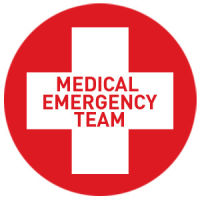When one radiology practice in the U.S. wanted to evaluate patient satisfaction, it decided to learn from the hospitality industry. The University of Texas MD Anderson Cancer Center Department of Diagnostic Radiology collaborated with the University of Houston Conrad N. Hilton College of Hotel and Restaurant Management and the University of Nevada, Las Vegas, William F. Harrah College of Hotel Administration, to explore the application of service science to improve the patient experience.
An article in the Journal of the American College of Radiology reports on a pilot study conducted by the three institutions to identify and rank the specific needs and expectations of patients undergoing imaging procedures in the MD Anderson Department of Diagnostic Radiology.
Focus groups of patients and a large-scale survey allowed the practice to identity and rank key drivers of patient satisfaction. These included:
Many attributes rated highly by patients confirmed the need for clear communication - being informed of what they need to do prior to their study, being informed of what to expect from their study, being informed by staff of the length of and reason for any delays, getting easy to follow instructions after their study and knowing that the reception staff will be able to answer any questions.
In interviews of physicians and focus groups conducted with nurses and technologists, it was apparent that their opinions of what would drive patient satisfaction differed to those of patients. Physicians thought that convenient scheduling, patient comfort, prompt responses to customer queries, ]creating a patient-oriented culture, proving clear instructions, and offering prompt check-in would be key drivers. Nurses and technologists felt that it is
important for a patient to move through the entire procedure—]from check-in to billing—without facing any service failures. However, they were aware that patients should not be treated as a “number” while they go through the various stages, as this would negatively affect
their overall experience.
The authors emphasise the importance of using a high-quality survey instrument to best understand patients. They conclude, “In making hiring decisions, many departments do not consider an individual’s ability to listen, express empathy, or communicate with patients. Of greater concern is the fact that departments might not provide the necessary resources and training for employees to improve their listening skills and empathy. Providing a satisfying experience for patients in a diagnostic imaging facility is less complicated than it is often perceived to be; our data suggest that patients prefer active listening, respect, and empathy over additional amenities and convenience”.
An article in the Journal of the American College of Radiology reports on a pilot study conducted by the three institutions to identify and rank the specific needs and expectations of patients undergoing imaging procedures in the MD Anderson Department of Diagnostic Radiology.
Focus groups of patients and a large-scale survey allowed the practice to identity and rank key drivers of patient satisfaction. These included:
- having their concerns acknowledged
- being treated with respect
- being treated like a person, not a number.
- knowing that their paperwork will be in order when they check in
- lack of delay between their study and when they get their results
Many attributes rated highly by patients confirmed the need for clear communication - being informed of what they need to do prior to their study, being informed of what to expect from their study, being informed by staff of the length of and reason for any delays, getting easy to follow instructions after their study and knowing that the reception staff will be able to answer any questions.
In interviews of physicians and focus groups conducted with nurses and technologists, it was apparent that their opinions of what would drive patient satisfaction differed to those of patients. Physicians thought that convenient scheduling, patient comfort, prompt responses to customer queries, ]creating a patient-oriented culture, proving clear instructions, and offering prompt check-in would be key drivers. Nurses and technologists felt that it is
important for a patient to move through the entire procedure—]from check-in to billing—without facing any service failures. However, they were aware that patients should not be treated as a “number” while they go through the various stages, as this would negatively affect
their overall experience.
The authors emphasise the importance of using a high-quality survey instrument to best understand patients. They conclude, “In making hiring decisions, many departments do not consider an individual’s ability to listen, express empathy, or communicate with patients. Of greater concern is the fact that departments might not provide the necessary resources and training for employees to improve their listening skills and empathy. Providing a satisfying experience for patients in a diagnostic imaging facility is less complicated than it is often perceived to be; our data suggest that patients prefer active listening, respect, and empathy over additional amenities and convenience”.
References:
Steele JR, Jones AK, Clarke RK, Shoemaker S (2015) Health care delivery meets hospitality: a pilot study in radiology. J Am Coll Radiol, 12(6):
587-93. doi: 10.1016/j.jacr.2014.10.008
Latest Articles
radiology, diagnostic imaging, patient satisfaction
Reports on a pilot study of patient satisfaction at a diagnostic imaging cancer centre.



























